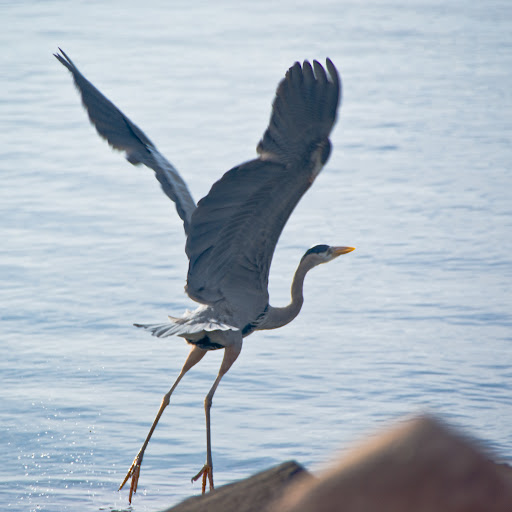I always breath a sigh of relief when the last racer crosses the finish line and I'm no longer "responsible" for them. And a final sigh of relief when the course is all taken down and I'm home again.
This year's race was a bit of a roller coaster, with Murphy doing his best to mess us up, and lady luck doing her best to rescue us. Maybe it was payback for everything going so smoothly last year. (Of course, I thought last year was payback for the problems the year before!) For example:
Several weeks before the race there's no water in the creek we're supposed to canoe on. Luckily it was only because they diverted water for irrigation and it came back again.
One land owner didsn't want us on his land, so I re-routed the course around it. Then, two weeks before the race, we found out his land actually juts out on one corner so I had to re-route the course again. In the process our proposed rappel location no longer worked and we had to hurriedly scout out another one. Luckily, we found a good spot nearby.
The people I'm counting on to lend us orienteering flags end up having an event the same weekend. Yikes! I arrange to borrow some from Alberta but they have an event the weekend before. Luckily, the flags arrive an hour before I leave for the race. Nothing like cutting it close!
Although statistically this area should have had little to no rain, the week before the race there's over 2 inches of rain. Two days before the race because of the mud we can't get our vehicle to the rappel and have to carry 4 big metal tripods and all the ropes and anchors a kilometer from the highway. Five trips later and I've completed the first 10 km of
my race. (Of course, if I didn't keep forgetting things I could have cut out a couple of trips!) Things had just barely dried out enough to make the dirt roads passable and then it rained most of the night before the race. Even then, we might still have squeaked by but it rained again in the first few hours of the race.
The day before the race the water system at the camp burst and we had no water for toilets, let alone showers! Luckily it was easy to fix.
Because of all the changes I ended up printing the maps at the last minute. Of course, the printer has major problems - actually melting one of the rollers! Luckily we have a spare, even though it's not something we normally keep a spare of.
Anyway, you get the idea. It definitely added to the stress of organizing the race.
On top of the stress, there's just a lot of work involved in organizing this kind of event. I made 5 trips down to the area, totaling 14 days. (No wonder I didn't get out climbing much this summer!) Even just the driving time added up to 40 or 50 hours - a full work week! And then there's the countless hours preparing the maps and other materials, handling registration, and organizing volunteers, and all the hassles associated with each of those. Thank goodness Don Hernberg looked after dealing with the land owners - that was another big job all by itself.
Don and his son Michael have been wanting to organize their own race in the area. After the race I asked Don if he still wanted to do his own race. I had to smile at his response: "Well, I don't know, it's a
huge amount of work."
Don't get me wrong - I enjoy it, especially the scouting and the planning. But still sometimes I wonder why I get myself into these things!
Race day just continued the roller coaster. I lay awake most of the short night before the race (the start is at 4 am) listening to the rain and wishing it would stop. It actually did stop about 3:30 am but then we had to decide what to do. Would the roads be passable for the volunteers and support vehicles? We decided they wouldn't be, so I quickly shuffled parts of the course to try to piece something together. But then the volunteers who had gone to the first location said that conditions weren't that bad, so we decided we'd go back to the original plan. Then, after we'd committed to that, it started raining again. And the vehicles that had gone ahead further reported that the roads were no good and we'd never get the support vehicles down them safely. So I had to re-shuffle the course yet again. As the saying goes,
"No plan survives contact with the enemy."
I thought I'd designed the first foot stage in the dark to be fairly easy. You could follow a fence line from one road to another, and then follow the road to the transition. Even in the dark, you wouldn't think that should be too hard. And it wasn't for some teams. But others had more problems. Teams arrived up to 45 minutes late. One team arrived at the transition from the opposite direction, having somehow missed the road and done a big circle. One team quit and went home after this stage.
We'd carefully instructed teams not to cross the fence into the out of bounds area. Somehow, between racers and volunteers some teams heard "don't cross any fences". So when they came to the first fence they had to cross, they retreated. Even though the fence was fallen down, and we'd gone to the trouble to mark the route with a glow stick, and the map was pretty clear. Of course, after they retreated they found out they had been in the right place after all and they had to go back again (up a big hill). Ouch! I do have to give them credit for following instructions though!
Meanwhile, the racers were all on their way to a transition area where we couldn't get to and they were going to arrive to find no one there. I jumped on the quad with another volunteer and we got there as fast as we could. (I'm not a big fan of things like quads, but it's hard to argue in this kind of situation.) Surprisingly, despite the mud plastered biking, the racers were in good spirits and were understanding about the problems. We sent them on their way to bike another 10 km of mud to meet up with their support vehicles.
I stayed to wait for the last few teams. At this point I realized that there I was, alone, in the middle of nowhere with no water, no food, no pack, no first aid kit, no nothing. But hey, I had my clipboard! On the positive side, by this time the sun had come out and it turned into a reasonable day.
Once we'd regrouped all the racers and support in one location (the Jensen's farm) I let the racers vote on whether to continue biking, which they'd have to do if they wanted to do the bulk of the original course. As I expected, there were some teams that had had enough of biking in the mud, but most wanted to continue. In the end only one team decided not to get back on their bikes. At least everyone had a bit of a break and a chance to clean the worst of the mud off their bikes.
We took all the support people back to the camp, and at this point the volunteers and I could relax a little. We had 4 hours or so till we'd see the racers again.
The race finished up with the climbing wall and zip line and a foot section around the camp. Everyone crossed the finish line within about a 40 minute period - one of the nice things about the score format with timed stages. (Previous point-to-point Prairie Pitches had people crossing the finish line over as much as a six hour period.)
In hindsight, I could have planned the canoe stage near the camp. Not so nice, but we could have done it regardless of conditions. And I probably shouldn't have planned a transition in a spot we knew we wouldn't be able to get to if it rained a lot. (Regardless of whether a lot of rain should have been about as likely as winning the lottery.) But hindsight is always 20:20.
Even without the bad conditions, I also suspect I made the course a little too tough for the beginner teams. It's so hard to judge. When I raced in the Prairie Pitch I usually came in somewhere near the middle. So I figure I can regard myself as somewhat "average". However, when it comes to the hills, all my climbing experience probably makes me not so average. And after scouting the course multiple times it
all starts to seem pretty easy!
An even bigger problem is the huge variation. Fast teams are twice as fast (or more) as slow teams. And bad conditions can easily be twice as slow as good conditions. So a fast team on a good day could be 4 times as fast as a slow team on a bad day. So do you allow an hour for a stage, or four hours? (Then add another factor of two for navigation skill!) In theory, the score format and its optional points accommodate for this. And it did for the most part. But because conditions were slow (at least on the biking) it meant that people got very few (if any) optional points, which makes the race less interesting.
Of course, you're not dealing with a blank slate when you're designing the course. There are all kinds of constraints that make it tough to adjust things the way you'd ideally like to. There are only roads and trails in certain spots. The interesting terrain is only in certain spots. Canoeing is only possible in certain spots. Support and volunteer vehicles can only reach certain spots. And, of course, you want to include as much
good stuff as possible.
Oh well, it was definitely an adventure, for the organizers as well as racers. For the most part I think everyone had a good time despite the hiccups. All I can do is try to learn from the experience when I'm planning next year's race. Not that I want to think about that just yet!
I have to admit I'm looking forward to leaving tomorrow for a month in Australia where the most stressful decision will be which beach to lie on! (Ok, slight exaggeration, anyone who knows me knows that lying on the beach isn't exactly my style. But you get the idea.)
Links:
ACC Sask race web sitePhotosMap and
Point List
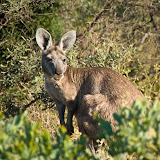


 Notice the tracks leading to the bottom of the tree.
Notice the tracks leading to the bottom of the tree.



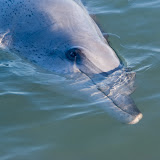

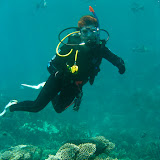
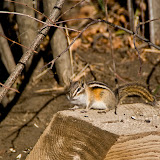
 The question, of course, is why did the tiger salamander cross the road? I'm not sure. It rained a lot yesterday which may have something to do with it. It surprises me that they're active when it's cold - the overnight low must have been around 5 c and it had only warmed up to about 8 by this time. I wonder if they move to different places to spend the winter? Or if they're out looking for mates? A couple of years ago I saw another one near here at a similar time of the year in even colder temperatures.
The question, of course, is why did the tiger salamander cross the road? I'm not sure. It rained a lot yesterday which may have something to do with it. It surprises me that they're active when it's cold - the overnight low must have been around 5 c and it had only warmed up to about 8 by this time. I wonder if they move to different places to spend the winter? Or if they're out looking for mates? A couple of years ago I saw another one near here at a similar time of the year in even colder temperatures. When I moved close to photograph him (her?), he'd curl up his tail. But after I squatted in front of him for a few minutes without moving he approached my feet and appeared to be looking for a hiding spot under my shoes.
When I moved close to photograph him (her?), he'd curl up his tail. But after I squatted in front of him for a few minutes without moving he approached my feet and appeared to be looking for a hiding spot under my shoes. They almost look like they're smiling. After taking pictures I backed off and watched to see where he'd go, assuming he'd cross the trail and head off into the grass. But no, he seemed intent on heading straight down the middle of the path. This is a busy trail with bicycles and walkers and dogs and I didn't think the trail was the best place for him so I carefully picked him up and moved him onto the grass where he soon disappeared.
They almost look like they're smiling. After taking pictures I backed off and watched to see where he'd go, assuming he'd cross the trail and head off into the grass. But no, he seemed intent on heading straight down the middle of the path. This is a busy trail with bicycles and walkers and dogs and I didn't think the trail was the best place for him so I carefully picked him up and moved him onto the grass where he soon disappeared. This one was slightly larger and appeared to still have remnants of the gills they have in their aquatic larval stage.
This one was slightly larger and appeared to still have remnants of the gills they have in their aquatic larval stage. I've seen a few of these diving but they're quite small and hard to spot.
I've seen a few of these diving but they're quite small and hard to spot.
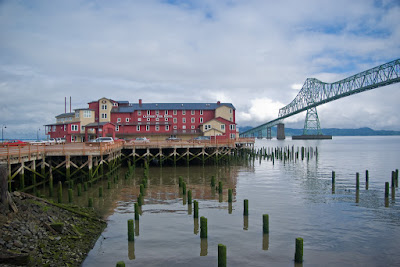

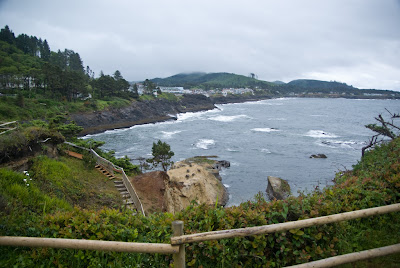




 This morning looked so nice and sunny that I decided I had to get outside. I grabbed my camera and headed out of town, stopping to pick up a latte and a muffin. It was cool at first, just above freezing, but it warmed up as the morning progressed.
This morning looked so nice and sunny that I decided I had to get outside. I grabbed my camera and headed out of town, stopping to pick up a latte and a muffin. It was cool at first, just above freezing, but it warmed up as the morning progressed.